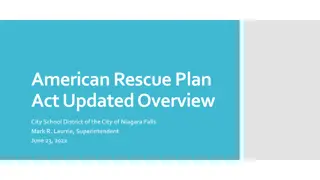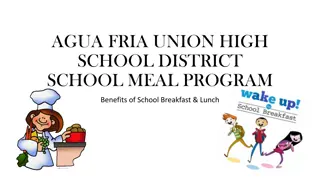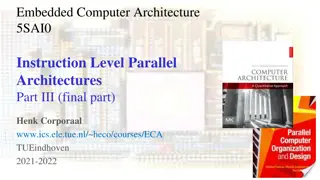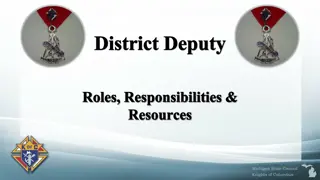Social Skills Instruction Program at Redford Union School District
Providing social-emotional learning in a structured psycho-educational setting at Redford Union School District's Day Treatment Program, focusing on emotional skill development and academic progress. The program includes Second Step Curriculum, aimed at promoting school success, safe climate, and respect, through lessons on empathy, problem-solving, emotion management, and more for elementary and middle school students. Research-based with family involvement and online activities.
Download Presentation

Please find below an Image/Link to download the presentation.
The content on the website is provided AS IS for your information and personal use only. It may not be sold, licensed, or shared on other websites without obtaining consent from the author. Download presentation by click this link. If you encounter any issues during the download, it is possible that the publisher has removed the file from their server.
E N D
Presentation Transcript
Push-In Social Skills Instruction Second Step Social Skills Curriculum Stuckey Center EDT Redford Union School District
Redford Union Day Treatment Program Wayne RESA center-based program that provides a highly structured psycho-educational setting for students, kindergarten through eighth grade, who reside in one of the eight Wayne County Districts. All students are Special Education certified with an Emotional Impairment. Work toward returning students to their home district in two years or less. Therapeutic intervention to address social, emotional, and psychiatric conditions in an academic, educational setting. Therapeutic school environment, to support student progress in general education curriculum benchmarks, and emotional skill development. Michigan Merit Core Curriculum. Common Core State Standards. Participation in State Assessments.
Research based program that teaches social-emotional skills Skills for Learning Emotion management Problem-solving Empathy Social-emotional learning is so important because our job is to create productive, happy citizens. Dedy Fauntleroy, Principal at John Stanford International School in Seattle,WA https://www.youtube.com/watch?v=WWavPce616Q&feature=youtube
The Second Step Program Promotes School success School connectedness Safe and respectful school climate
What is included? 22 Lessons Handouts/homework assignments 3 Unit Cards for teachers 3 Colorful classroom posters Lesson DVD Home link activity Family Letter Free Online lesson activities
Units Elementary Sample Managing Frustration 1. Empathy and Skills for Learning Resisting Revenge Empathy and Respect Handling Put-downs Listening with Attention Avoiding Assumptions Being Assertive Predicting Feelings 3. Problem Solving Taking Others Perspectives Accepting Differences Solving Problems Disagreeing Respectfully Making a plan Responding with Compassion Seeking help Dealing with gossip Dealing with peer pressure 2. Emotion Management Introducing Emotion Management Calming Down Managing Anxiety
Units Middle School Sample 1. Empathy and Communication Working in groups Disagreeing respectfully Negotiating and compromising Getting and giving support 3. Emotion Management Understanding anger Staying in control Coping with stress 4. Substance Abuse Prevention Myths and facts Norms and attitude Making good decisions 2. Bullying Prevention Responding to bullying Cyber bullying Sexual Harassment
Fourth Grade Video Seventh Grade Video
Benefits Supports positive school environment/reinforces PBIS. a. Builds relationships between students and staff. b. Prevents bullying by encouraging empathy and compassion. c. Teaches how to handle strong emotions and improve problem-solving skills. d. Normalizes feelings and situations for students. e. Gives students the opportunity to listen and learn from their peers f. Promotes positive individual change.
Benefits Provides a foundation for teaching and modeling social-emotional skills for all staff. Creates a common language for staff to use throughout the day. Increases social workers awareness of staff perspectives and day to day experiences. Integrates social skills group work into individual work and vice versa. Builds relationships between staff and students who would not otherwise have the opportunity.
Benefits Hands-on approach which provides the opportunity for the social workers to push-in to classroom. Observe interactions between students and peers, and students and staff. Observe behavior in real time and in the actual environment. Allows social workers to assist with behavioral issues as they happen. Allows for follow-up with individuals or groups of students in conflict. Allows for collaboration with staff and parents.
Social Skills Push-In Social Workers do lessons once a week with teacher support. Develop group rules incorporating PBIS expectations. Identify goals. Ice breakers. Team Building Activities (Beach ball challenge/ Reindeer challenge/Human knot). Partner/ group work. Multimodal learning (Role-play, DVD, movement, dancing, skill practice, discussion, hands-on activities). End lessons with small treat. Supplemental lessons/videos (hygiene/sportsmanship). Program is flexible depending on the group, day, etc.
Things to think about. Who will facilitate the lessons? Planning time. Technology! Technology! Technology! Scheduling with classroom. Adapting to curriculum demands. How to get staff buy-in. Adapt the curriculum to the functional ability level of your students.
Teachers Feedback Lessons teachers found most useful in the classrooms: All of the team building activities Hands-on activities Role plays Empathy Anger Management Hygiene Dance videos Bullying prevention
Teachers Feedback Teachers have observed noticeable changes: Students are more cooperative Students are developing leadership skills Students are working better with a variety of peers Students demonstrate improved insight When reminded of second step lessons, they do use what they have learned. Teachers are finding it helpful to have a common language
Students Feedback Students enjoyed Students learned Group work How to problem-solve Videos How to respond assertively Role playing How to be an ally Games Active listening skills Treats/Rewards How to calm down
"Over the years, researchers have made numerous attempts to produce empirical results about which therapeutic modalities create the best therapy outcomes (Lantz, 2004). Again, this area has also been researched extensively in relation to therapeutic outcomes with seemingly limited results. Past research indicates that relationship factors, such as the therapeutic alliance, correlate more highly with success than do specialized treatment techniques or individual therapeutic modalities (Lantz, 2004)."
DANCE!!!!! https://webertube.com/video/18979/calm-it- down-dance Redford Union Day Treatment Stuckey Center EDT 26000 Fargo Redford, MI 48240 313-242-3901























